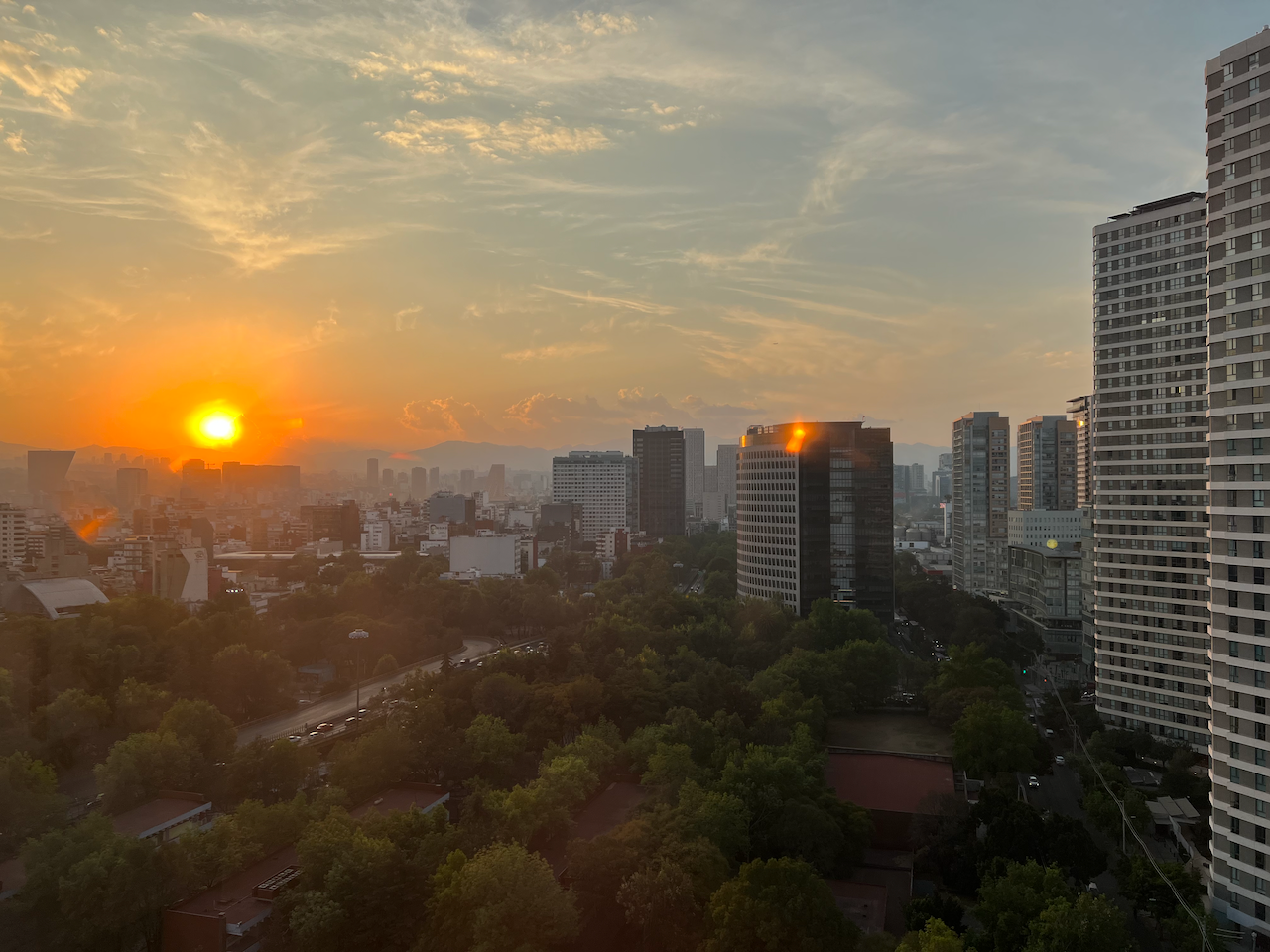notes on a few weeks in a high rise
post 9/100

I’ve spent a decent amount of time in cities (New York, San Diego, Mexico City) but for the most part it’s been at ground level or in sub-five floor walkups. Some of my friends live in nice luxury towers along rivers and my visits there would give me a peek into the day to day of such places but spending extended periods gives a different perspective compared to coming over for dinner once in a while.
The building I’m in is 18 floors with 16 containing least 20 units each and the underground garage at least 5 levels deep. It’s not the fanciest one around but it does seem to be on the newer side. I booked it via Airbnb and it seems I booked it from the building directly (not the owner of the unit) which is definitely preferable to getting a key card along with what to say your deal is in case a neighbor or security asks.
Some observations and surprises:
- staff count scales with the size. Some buildings have the doorman handling deliveries, parking, emergencies, and probably a few other tasks. Not here. There are two (!) people at reception during the day, and they could probably use a third. The lobby actually feels like a buzzing space as opposed to simply a place between street and the elevators. Feels like a hotel, giving it a liveness.
- access control by key card. A plastic card lets me into places and rejects me from others. When this card gets de-magnetized, my mobility optionality are drastically reduced to zero with the only path I could take effectively flushing me to the lobby and out of the building. Can’t access certain floors or certain doors. Some weird norms with people scanning them for open doors, even when the door is wide open as some sort of social access security check.
- traveling up and down in space is unusual. Moving from my room up 13 floors to the rooftop lounge put a significant amount of mental space from my living room/bedroom for a context switch or change of scenery. It’s actually quite magical to get into a box, stand for 20 seconds, and emerge in a completely different environment (social and temperature).
- communal spaces are really nice: they don’t take much to get to (two doors and an elevator ride) yet are exclusive enough to be calm and predictable compared to a coffee shop outside. It’s an interesting compromise to effectively make each room a tiny bit smaller but give everyone equal access to lots of shared space with some of the nicest views in the building. Only thing missing is an espresso machine.
- gym in building: wow. My gym in NYC used to be a three-minute walk but even three minutes outside reduces the odds of leaving my warm bed by that much. Especially when there’s cold weather in the consideration. Being able to go do squats without even leaving my building makes is amazing. I forgot how much I missed a dedicated gym: partly it’s the equipment I wouldn’t want to buy myself and partly the singular focus of the space shared by everyone there.
- surprisingly modern and connected: after check-in almost all of my communication is through the Airbnb app. I paid for my washer and dryer through Apple Pay with an app that gives me availability and remaining times. There’s posters advertising the residents’ app which has even more features (which I’m tempted to download and try and explore).
- massive temperature disparities: the lobby entrance is a very different temperature from the rooftop pool deck. The guy that brought our A/C to our too-hot room mentioned he just delivered a heater to a room on the side of the building away from the sun.
It’s been a fascinating experience living in a building with hundreds of other residents as opposed to dozens because it makes it clear which parts of human living can be made more efficient (shared amenities, maintenance coordination, mail processing) and those that can’t (elevators, vehicle parking spaces, check-in processes). I am particularly surprised at how balanced the tradeoffs between space and comfort can be when scale is at play.